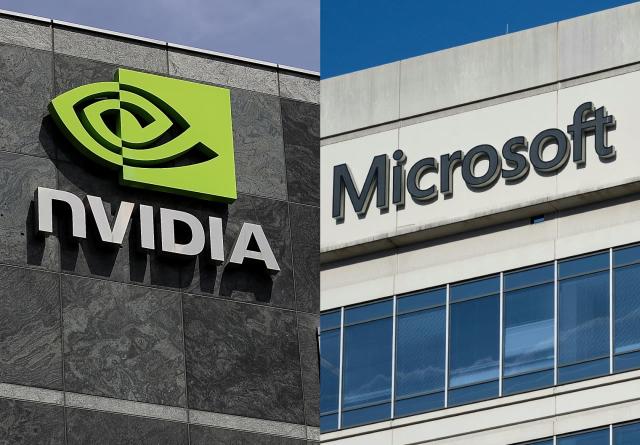Microsoft’s presence at this year’s Nvidia GTC AI conference in San Jose, held from March 18 to 21, was marked by groundbreaking collaborations with long-standing partner Nvidia. The announcements made by Microsoft not only showcased their commitment to advancing AI technology but also positioned them as frontrunners in the realm of AI innovation.
The week-long conference saw a flurry of AI-related news spanning various sectors, from infrastructure enhancements to platform integrations and industry-specific breakthroughs. Among the highlights was an exclusive one-on-one conversation between Nidhi Chappell, Vice President of Azure Generative AI and HPC Platform at Microsoft, and VentureBeat Senior Writer Sharon Goldman. This dialogue delved into Microsoft’s strategic partnerships with both OpenAI and Nvidia, offering insights into the direction of the market and Microsoft’s pivotal role within it.
Chappell emphasized the significance of collaboration in driving progress, stating, “Partnership is really at the center of everything we do.” She highlighted Microsoft’s concerted efforts alongside Nvidia to deliver high-performance infrastructure capable of supporting large-scale AI models efficiently and reliably across the globe. This collaboration aims to empower enterprise customers to seamlessly integrate AI solutions into their existing workflows or embark on new ventures using Microsoft’s Azure OpenAI service.
In addition to engaging discussions, Microsoft’s presence at the conference was marked by significant announcements and demonstrations, underscoring their commitment to advancing AI capabilities across various domains.
Major Conference Announcements:
Advancements in AI Infrastructure: Microsoft unveiled major integrations with Nvidia’s latest technologies, including the Nvidia G200 Grace Blackwell Superchip and Nvidia Quantum-X800 InfiniBand networking. These innovations, integrated into Azure, aim to enhance the performance and scalability of AI workloads, particularly in areas such as natural language processing, computer vision, and speech recognition.
Introduction of Azure NC H100 v5 VM Series: Designed for mid-range training, inference, and high-performance computing (HPC) simulations, the Azure NC H100 v5 VM series leverages Nvidia’s H100 NVL platform to deliver enhanced performance and scalability. With support for Nvidia multi-instance GPU (MIG) technology, organizations of all sizes can partition GPUs to accommodate diverse workloads effectively.
Breakthroughs in Healthcare and Life Sciences: Microsoft announced expanded collaborations with organizations such as Sanofi, the Broad Institute of MIT and Harvard, and academic medical centers to accelerate innovations in clinical research, drug discovery, and patient care. By leveraging Microsoft Azure alongside Nvidia DGX Cloud and the Nvidia Clara suite, these partnerships aim to democratize AI in healthcare and drive transformative changes in the industry.
Industrial Digital Twins with Omniverse APIs on Azure: The integration of Nvidia Omniverse Cloud APIs with Microsoft Azure extends the reach of the Omniverse platform, enabling developers to integrate core technologies into existing design and automation software. This integration facilitates the creation and simulation of digital twins for industries such as manufacturing, enabling real-time insights to optimize production processes.
Enhanced Real-time Contextualized Intelligence: Microsoft introduced Copilot for Microsoft 365, a feature powered by large language models and Nvidia GPUs, to enhance real-time intelligence and productivity for users. By combining proprietary enterprise data with AI inference predictions, Copilot enables users to leverage contextualized insights to enhance creativity and skills.
Turbocharging AI Training and Deployment: Nvidia NIM inference microservices, part of the Nvidia AI Enterprise software platform, offer cloud-native microservices for optimized inference on popular foundation models. These microservices, deployed using Nvidia AI Enterprise inference software, streamline the development and deployment of performance-optimized AI applications, accelerating time to market for developers.
Deeper Integration of Nvidia DGX Cloud with Microsoft Fabric: Microsoft and Nvidia announced deeper integration of Microsoft Fabric with Nvidia DGX Cloud compute, facilitating seamless execution of data-intensive workloads. By leveraging Fabric OneLake as the underlying data storage, developers can accelerate data science and engineering workloads, enabling enhanced insights and performance optimization.
Conclusion:
Microsoft’s prominent presence at the Nvidia GTC AI conference underscores its commitment to advancing AI technology and fostering collaboration within the industry. Through strategic partnerships, groundbreaking announcements, and innovative demonstrations, Microsoft continues to drive AI innovation across diverse domains, shaping the future of technology and empowering organizations to unlock new possibilities through AI-driven solutions.











